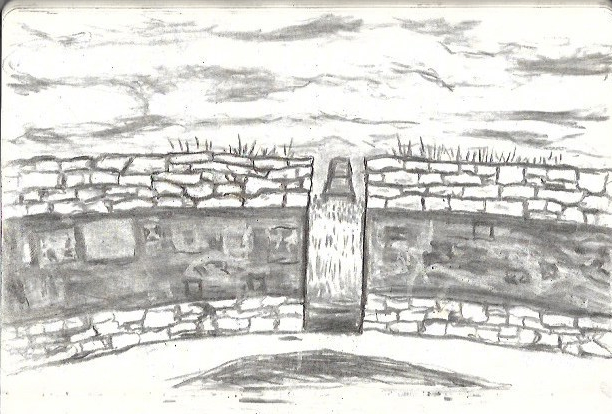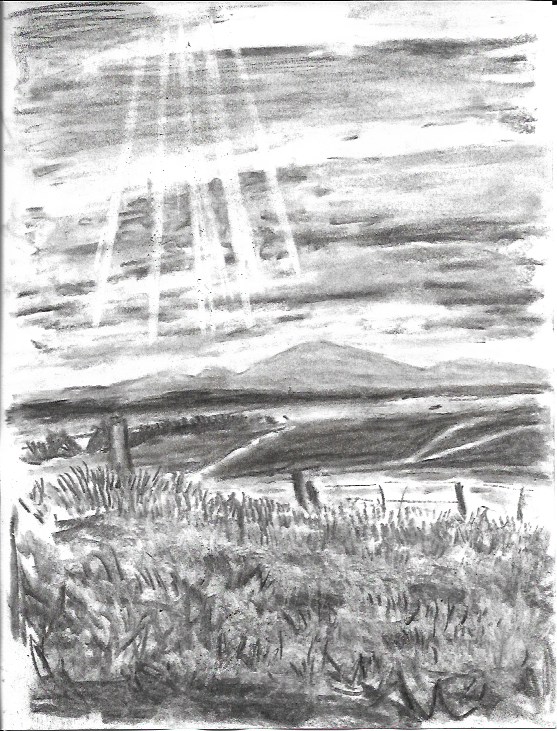I just got back from a trip out west–a four thousand mile journey that took me across northern Nebraska, through Wyoming and Idaho and up through Oregon. I discovered two things apropos capturing images: 1) it is impossible to sketch while driving, or even when you stop to rest–that is, if you are on a tight schedule. Drawing takes time, even fast sketching. 2) it is possible to photograph, even while driving, the landscape–but a photograph is completely inadequate to render the vast spaces of the West. I took a lot of snapshots, and almost always they look pathetic compared to the intense emotional experience of landscapes so overpowering. But I did manage to sketch a couple of times, when it seemed spiritually important to take the time. I attach a sketch made at Wounded Knee Massacre Site, and another at the Little Bighorn Battle Monument. In the first sketch I tried to capture, not the cemetery at the top of the hill, but the declivity at the bottom where the massacre actually happened. It is a perfectly innocent little ravine, unless you know what happened.

The Little Bighorn sketch was made from the vantage point of the new Indian memorial, an earth and stone structure that frames the “Custer Monument” which has lorded over the site for far too long. What was interesting about the Indian monument was that it was purposely open to the white monument: the purpose was to invite the dead cavalrymen to join the circle, in keeping with Indian philosophy. It is a gesture of honor and reconciliation, but also one of control. We enter their circle, if we want to heal.

This last sketch is taken from a snapshot which I perilously grabbed through the windshield while driving in the early evening as I left Fort Laramie. The mountain in the background is Laramie Peak, the first real view travelers on the Oregon Trail had of the Rockies. In the photo it is almost invisible, because of the smoke from the fires in California. The sketch is more intense than the photo because you can feel the mountain. I am thinking I may go back and work from my bad photos to render the more important images as drawings–to remember how much I was moved by these Western vistas.

Wallace Stegner says, of the Western artist, “Perceptions trained in another climate and another landscape have had to be modified. That means we have had to learn to quit depending on perceptual habit. Our first and hardest adaptation was to learn all over again how to see. Our second was to learn to like the new forms and colors and light and scale when we had learned to see them. Our third was to develop new techniques, a new palette, to communicate them.” This is my third time in the West–I went once as an adolescent, once as a young man. Now I am an old man, and I finally see.
I think I understand the problem you describe, Jim. I felt the difficulty of capturing the facts of the western landscape in photos, and even while just trying to take it in. It seems easier here in the well watered East.
LikeLike
Yeah: two dimensions can’t capture three, especially at that scale!
LikeLike